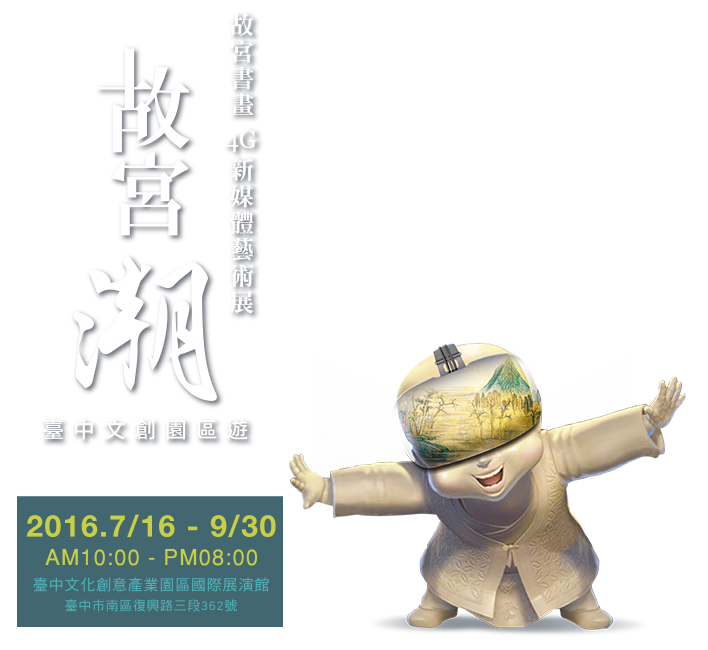Large-scale Projection Visual Experience Section
New Media Animation of the One Hundred Horses The “One Hundred Horses” is a picture scroll by Giuseppe Castiglione who chose a horse ranch for his creative theme. The horses in the painting are enchantingly lifelike and the artist excels at chiaroscuro care of his exquisite brush work. In brief, a meticulous triumph of realism in painting. The production basis of this film is to remain loyal to the original painting, by incorporating the latest high-end animation technology, herd of horses from the painting are gorgeously rendered, especially poses and activities such as playfully wrestling, leisure and recreation, galloping horses or ford crossing. Amazing horse actions are vividly presented before the audience.
New Media Animation of the Cold Food Observance "The Cold Food Observance" contains two poems on the Cold Food Observance written by Su Shi in 1079. Su had been banished to live in the city of Huangzhou and in the Cold Food Festival of his third year of banishment, he was inspired by the change of the seasons, his personal and professional setbacks, and impoverishment, to write two poems which he followed up with a brushed calligraphy scroll. Subsequent generations have acclaimed this as the best of Su Shi's surviving calligraphy. Moreover, fellow renowned poet and calligrapher, Huang Tingjian, brushed in comments of his own at the end of Su's scroll. As such, this calligraphic work contains superb artwork laid down by the hands of these two venerable luminaries. This video utilizes cutting-edge animation technology to present the emotional ups and downs of Su Shi's poems and the rise and fall of his flowing calligraphy strokes. A fascinating visual presentation of calligraphic rhythms is the rewarding result, highlighting his variously uneven, irregular, unconstrained, and extraordinarily variegated style.

Tang Dynasty: A Dance Between Brush and Ink
“My brush varies as the snake glides poised into his post, or thrashes in tune with the windstorm upon the walls.” The mad monk, Huai-su, in Autobiography, makes a record of poetic descriptions of calligraphy made by different scholars and aesthetes. This section commences with three videos: “Must See Paintings and Calligraphies Interactive Tabletop: Bronze Inscriptions”, the “Mao-Gong Ding Interactive Tabletop of Chinese Characters”, and “The Heavenly Spirit of Calligraphy". These three works introduce the entrancing beauty of calligraphy. Next you are invited to walk into the "Calligraphic Corridor: The Spirit of Autobiography",to experience the power and speed of Huaisu painting calligraphy as well as his free-spirited and defiant character.

Song Dynasty: Lotus in Sunny Day and Clear Wind
This exhibition section once more features the “Summer Lotus” somatosensory interactive installation, a perennial hit with audiences. When a breeze blows, Feng Ta-yu's originally static artwork Lotus Blossom in the T'ai-yeh Pond transforms into a dynamic lotus pond where duckweed collects and disperses and carp swim playfully. Colossal landscape painting reproductions are displayed together here and include Guo Xi's Early Spring, Fan Kuan's Travelers Among Mountains and Streams, Li Tang's Wind in Pines Among a Myriad Valleys, Cui Bo's Magpies and Hare and Song dynasty Emperor Huizong's Wintersweet Flowers and Chinese Bulbuls. The skilled integration of digital technology emulated natural scenes with famous Song dynasty landscape paintings gives rise to an oscillating contrast of the virtual and the real, the ancient and the modern, rewarding audiences with a mesmerizing viewing experience.

Yuan Dynasty: Dream in Qiao and Hua Mountains
Zhao Mengfu depicts the scenery of Que Mountain and Hua Mountain as a gift to his friend Chou Mi, who had never been to his hometown Jinan. This exhibition invites visitors to use the virtual reality service to enter Autumn Colors on the Que and Hua Mountains and take a closer look at the tall trees, falling maple leaves, and orderly small huts through using the interactive device Autumn Colors. Then the installation uses bird's eye perspective to explore the terrain of the majestic landscape of Jinan.

Ming Dynasty: A Taste of Daily Life
The art works displayed in this section include Ch'iu Ying's Spring Dawn in the Han Palace, T'ang Yin's Fishing in Reclusion Among Mountains and Streams, Shen Zhou's Lofty Mount Lu, and Wen Cheng-ming's Tasting Tea. In one sweep, you can feast your eyes on masterpieces composed by the Ming dynasty's four great masters. Via the Must See Paintings and Calligraphies Interactive Tabletop, you can leisurely scrutinize the variously posed Han dynasty concubines so consummately depicted by Ch'iu Ying. Moreover, by zooming into the painting's finer details, you can appreciate the quotidian side of their elegant royal court lifestyle such as their makeup, the stringed instruments they played, and the recreation they sought in reading.

Qing Dynasty: Globetrotting
Step into the Globetrotting installation to be encircled by vast skies. Your feet tread upon the Kunyu Quantu (World Map), painted by Ferdinand Verbiest to illustrate the Western world's geography and geopolitical perspectives to Emperor Kangxi. Via this new media artwork, we invite you to join in an exploration of the constellations of the night sky. Thusly, we can understand how the ancients envisioned the universe, plus the cultures and customs witnessed by 17th century maritime explorers.

National Treasure Theater
The National Palace Museum (NPM) has put great effort into promoting its collections. For instance, a panel of leading experts supervised the production of the Animated Paintings Series (whose theme is the NPM's renowned classic paintings) by a truly outstanding domestic team. Repeated success internationally has not only injected new life into our national treasures and cultural relics but further highlighted the astonishing strength of Taiwanese culture and creativity.

New Waves of NPM Creative Activities Section
This section contains the “Everyone can paint ‘One Hundred Horses'” creative coloring activity, “The Calligraphy and Letter Experience Section” hand-written letter activity, and the “Famous Historical Painting Photography Section,” not to mention hosting innovative joint photos with historical paintings. We invite you to bring your creativity fully into play, breathe new life into historical paintings and calligraphy, and generously share your artwork with audiences.
































